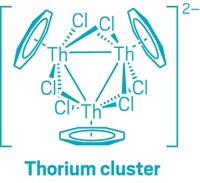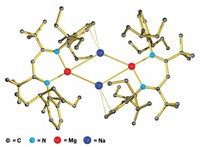Advertisement
Grab your lab coat. Let's get started
Welcome!
Welcome!
Create an account below to get 6 C&EN articles per month, receive newsletters and more - all free.
It seems this is your first time logging in online. Please enter the following information to continue.
As an ACS member you automatically get access to this site. All we need is few more details to create your reading experience.
Not you? Sign in with a different account.
Not you? Sign in with a different account.
ERROR 1
ERROR 1
ERROR 2
ERROR 2
ERROR 2
ERROR 2
ERROR 2
Password and Confirm password must match.
If you have an ACS member number, please enter it here so we can link this account to your membership. (optional)
ERROR 2
ACS values your privacy. By submitting your information, you are gaining access to C&EN and subscribing to our weekly newsletter. We use the information you provide to make your reading experience better, and we will never sell your data to third party members.
Synthesis
With Extra Care, A New Mercury Azide Is Made And Analyzed
The first nitrido-metal azide with a 3-D network structure is characterized
by
September 23, 2013
| A version of this story appeared in
Volume 91, Issue 38
Mercury-containing substances have fascinated scientists since the days of alchemy. Millon’s base, [Hg2N]OH•2H2O, and calomel, Hg2Cl2, are classic examples. But mercury-laden substances are toxic, and when paired only with nitrogen, they are explosive, making them difficult to study. Overcoming those challenges, researchers in Germany have plugged a mercury knowledge gap by synthesizing and characterizing [Hg2N]N3, the highly explosive azide salt of Millon’s base (Angew. Chem. Int. Ed. 2013, DOI: 10.1002/anie.201305545). To start, Axel Schulz and Alexander Villinger of the University of Rostock and coworkers synthesized the mercury azide Hg(N3)2 and combined it with ammonia in water. The reaction produced [Hg2N]N3, a yellowish compound that crystallizes in cubic and hexagonal forms. The researchers used different reactions to produce pure samples of each form. But given [Hg2N]N3’s explosiveness, the researchers could use only certain methods to analyze the samples. With extra care and safety gear, they successfully studied the samples with X-ray powder diffraction as well as with infrared, Raman, and optical emission spectroscopy. The researchers say [Hg2N]N3 is the first nitrido-metal azide with a three-dimensional network structure to be characterized, allowing for comparisons with other mercury azides.




Join the conversation
Contact the reporter
Submit a Letter to the Editor for publication
Engage with us on Twitter